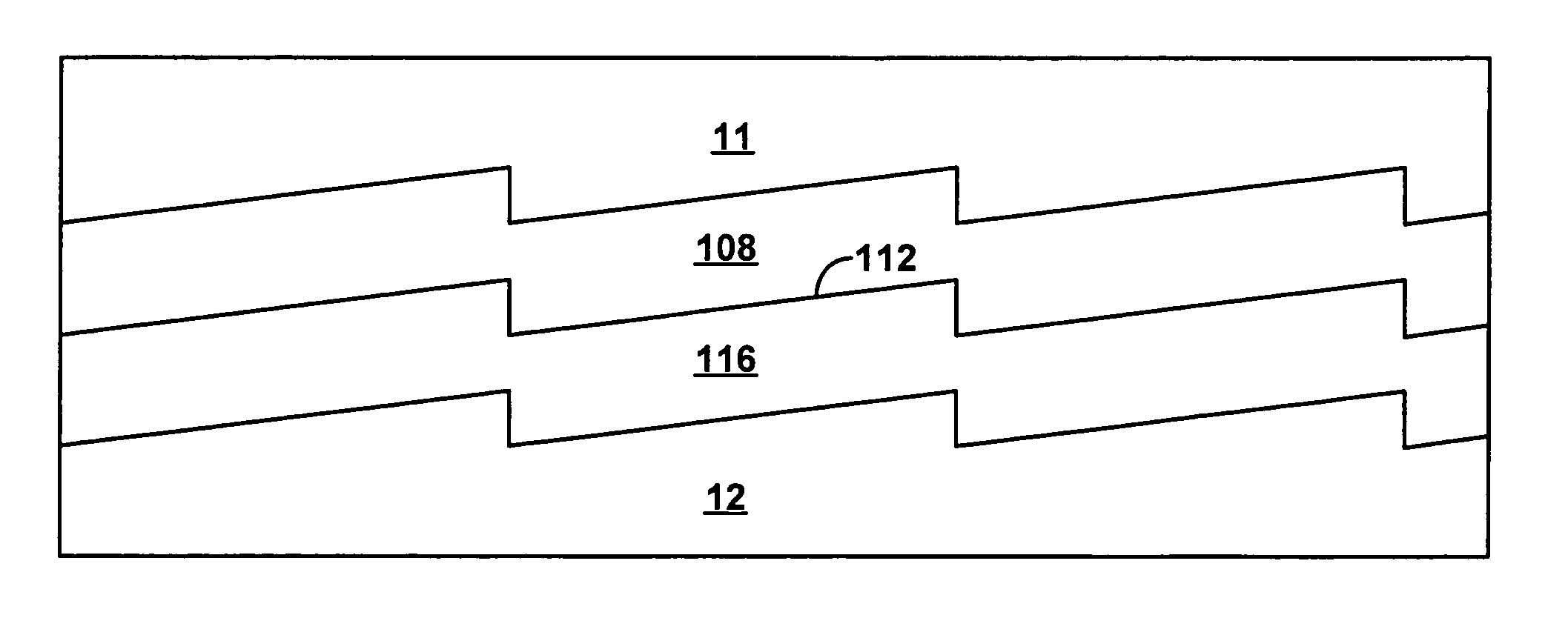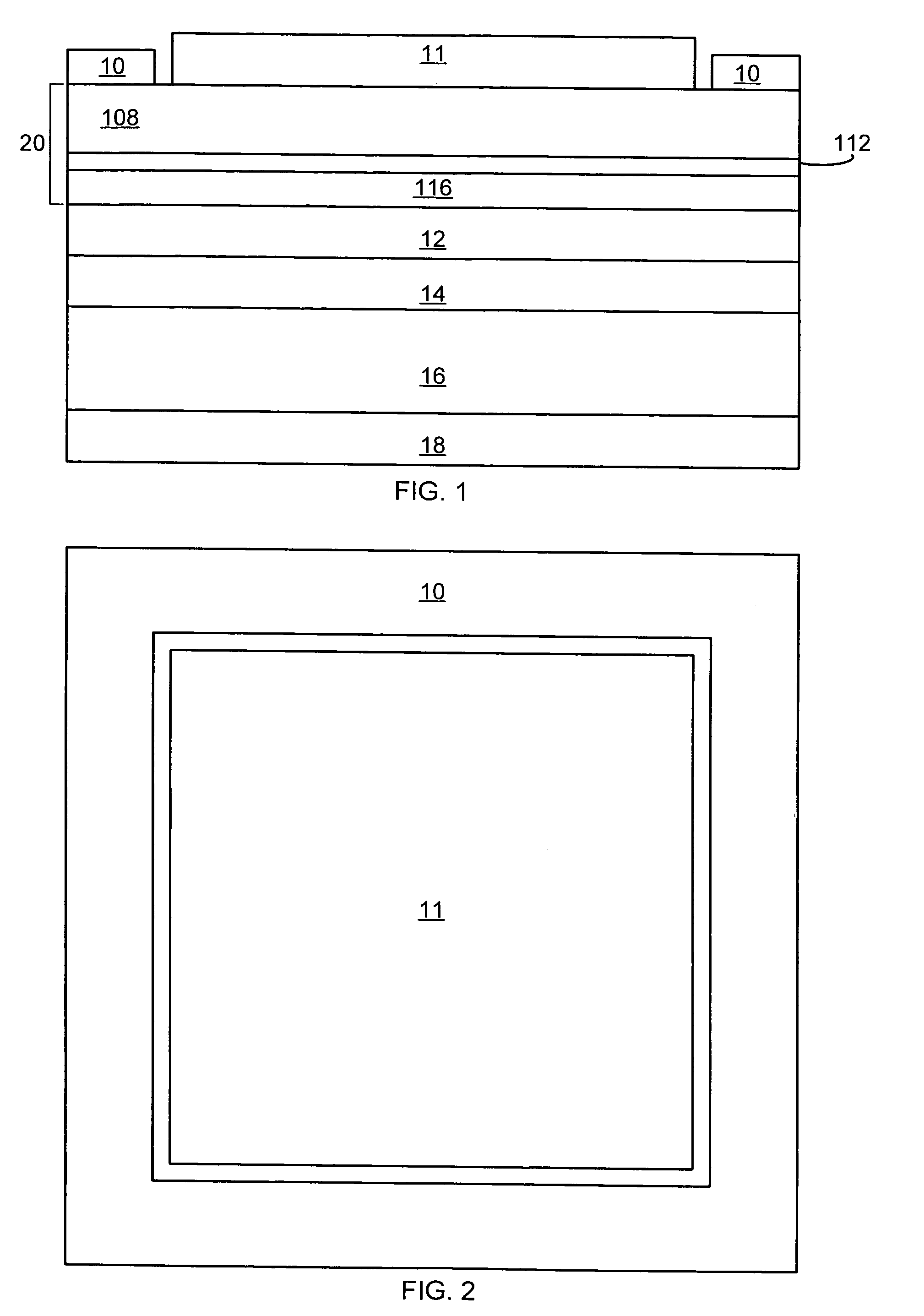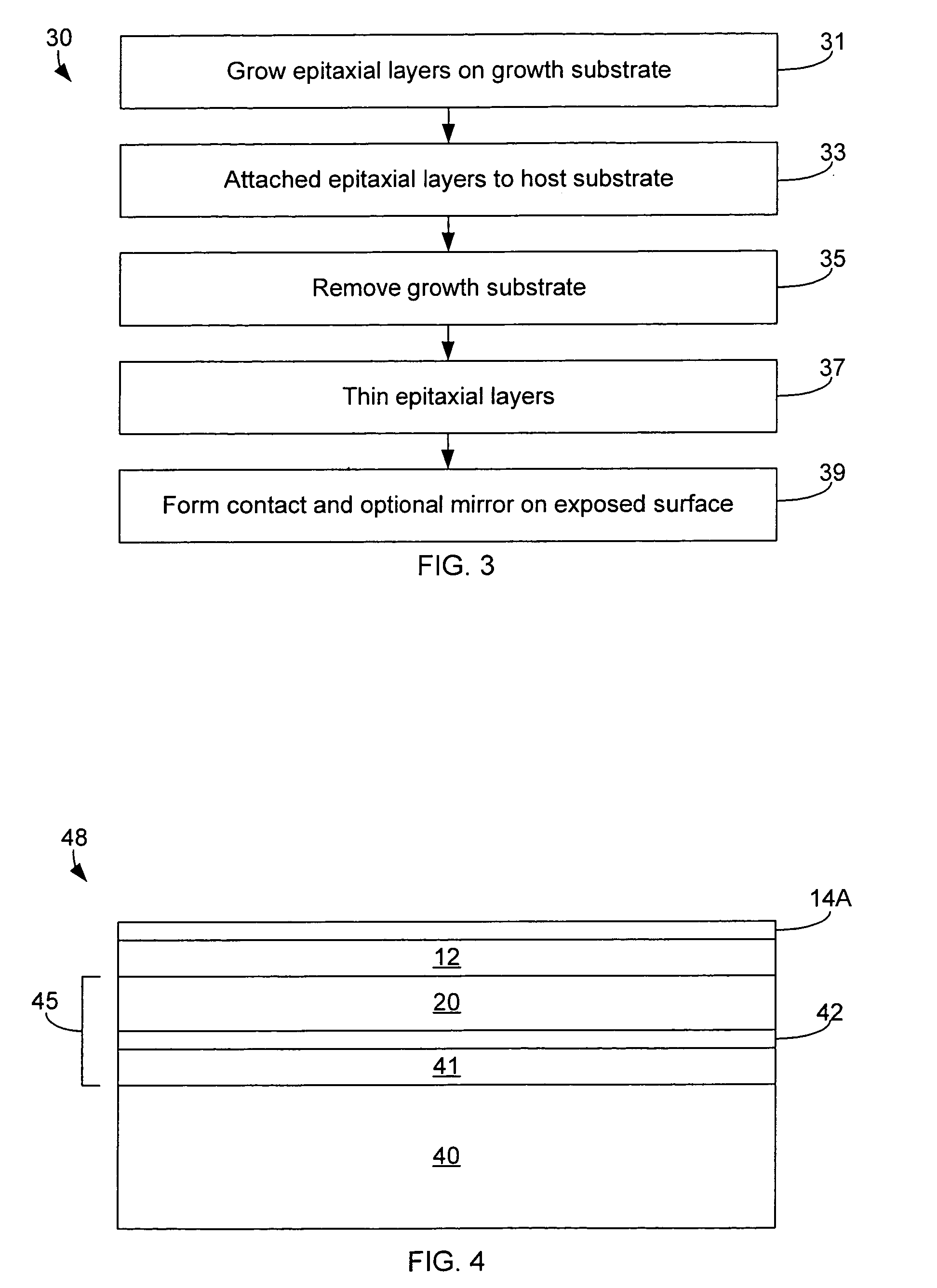Resonant cavity III-nitride light emitting devices fabricated by growth substrate removal
a technology of iii-nitride and light-emitting devices, which is applied in the direction of semiconductor devices, laser details, semiconductor lasers, etc., can solve the problems of difficult packaging of geometries and poor fill factor
- Summary
- Abstract
- Description
- Claims
- Application Information
AI Technical Summary
Problems solved by technology
Method used
Image
Examples
Embodiment Construction
[0024]In accordance with embodiments of the invention, improved III-nitride resonant cavity devices are provided. A constant cavity thickness is created by incorporating an etch stop layer during growth. In some embodiments of the invention, trenches are formed on the device to increase light extraction. In some embodiments, grid contacts are provided.
[0025]FIGS. 1 and 2 are cross sectional and plan views of a resonant cavity III-nitride device according to embodiments of the invention. An active region 112 is sandwiched between an n-type region 108 and a p-type region 116. The embodiment of FIGS. 1 and 2 shows an n-contact 10 formed on a portion of n-type region 108 not covered by DBR 11, through which light is extracted from the device. A reflective p-contact 12 is formed on p-type region 116. P-contact 12 connects the epitaxial layers 20 to a host substrate 16 either directly or via optional bonding layers 14. Host substrate 16 may be a semiconductor, requiring ohmic contacts 18 ...
PUM
 Login to View More
Login to View More Abstract
Description
Claims
Application Information
 Login to View More
Login to View More - R&D
- Intellectual Property
- Life Sciences
- Materials
- Tech Scout
- Unparalleled Data Quality
- Higher Quality Content
- 60% Fewer Hallucinations
Browse by: Latest US Patents, China's latest patents, Technical Efficacy Thesaurus, Application Domain, Technology Topic, Popular Technical Reports.
© 2025 PatSnap. All rights reserved.Legal|Privacy policy|Modern Slavery Act Transparency Statement|Sitemap|About US| Contact US: help@patsnap.com



